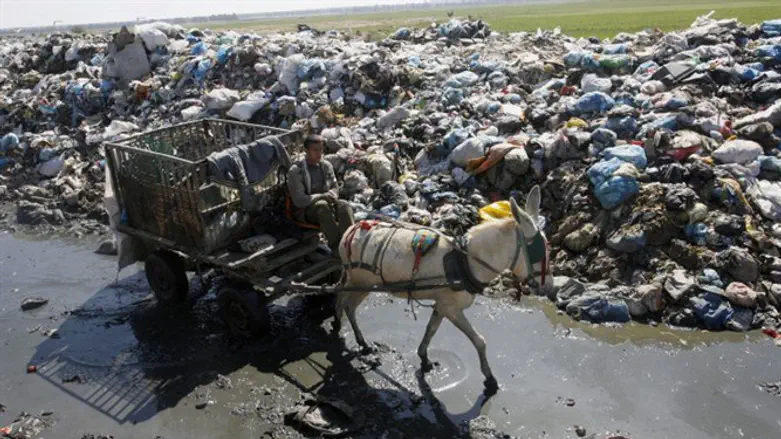
Authorities in the Hamas-ruled Gaza Strip are planning to turn the ruins of a former Israeli settlement bloc into a recycling plant.
Gaza has struggled for years with a waste management crisis, as primitive garbage dumps – often placed along the border with Israel – have caused major environmental damage, polluting not only the air but also Gaza’s groundwater. According to a report by Yediot Ahronot, nine-tenths of the Strip’s groundwater has been found to be undrinkable, due largely to seepage from garbage dumps.
The mounds of garbage are periodically burned to make room for new waste, causing high levels of air pollution in both the Gaza Strip and nearby Israeli towns.
Hoping to alleviate the waste crisis in Gaza and reduce pollution into nearby Israeli communities, Israel has approved a United Nations plan to build the Gaza Strip’s first-ever recycling facility.
The recycling plant will be built by authorities in the Hamas-ruled enclave using United Nations funds on the ruins of Israeli towns in Gush Katif, the largest bloc of Israeli settlements in the coastal enclave prior to the Gaza pullout in the summer of 2005.
Nearly 9,000 Israelis lived in the Gaza Strip prior to the 2005 pullout. All 21 Israeli towns were evacuated and demolished as part of the pullout, which had been pushed by then-Israeli Prime Minister Ariel Sharon.
As part of the pullout, Israel also withdrew its military forces from the Strip, turning full control over to the Palestinian Authority.
Two years later, however, the Hamas terror organization seized control of the Strip from the PA’s ruling Fatah party.
